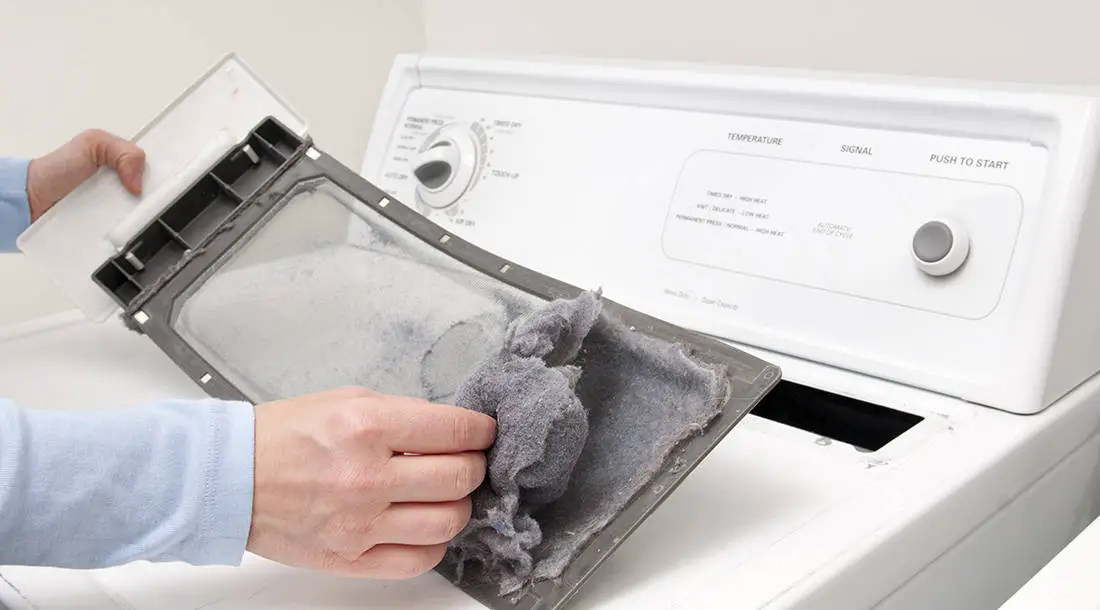Lint trap meaning
A lint trap is a filter that is a part of the clothes dryer used to trap the lint as the air goes out during the drying period. The location of the lint trap depends on the model and the dryer’s manufacturing. It has such a design that it could be quickly cleaned. If the lint trap isn’t attached to it, excessive amounts of lint may collect in the dryer vent hose. It will decrease the dryer’s efficiency, shorten its life span, and increase fire risk.

In simple words:
What is the purpose of a dryer lint trap?
After each load, the lint trap should be cleaned. This will help the dryer work efficiently and dry the clothes quickly. A clean filter can prevent a dryer from catching fire, which could be dangerous. Since every load doesn’t fill the trap, cleaning it can reduce energy usage after each load.
The lint trap filter may trap most of the lint produced, but there are still chances that some lint may pass through it and assemble in the dryer vent hose. Getting the dryer vent hose cleaned at least once a year is essential for maintenance and safety reasons. The assembled lint in the dryer vent hose can increase the risk of fire and can damage it. The case of fire rises when the vent is completely blocked.
An essential part of a clothes dryer, a lint trap may also serve as a washing machine’s drainage system. A washing machine may drain in a washtub or directly into the floor drain, and lint can cause problems with the pipe. As the lint washes off the clothes, it flows out with the drainage water and can damage the drain site, producing slower drainage. To stop this, a filter is installed on the top of the drain site. This filter should be cleaned to prevent backups and keep the water draining smoothly.
A lint trap can be found at any of the hardware stores. In addition, if the dryer’s tap has worn holes, the manufacturer may replace it.
Difference between Dryer Vent and Lint Vent
We may use the dryer to dry our clothes every week, but not all know the importance of cleaning the dryer vent. This problem arises because many may confuse the dryer vent with the lint vent. Both are very important to clean and have no difference in cleanliness.
A) Lint Trap – The lint trap is the one line of defense against the lint assembly. It comes with a mark and is easily within reach. It is located on the right side of the dryer’s door or top of the dryer. The lint trap is that line of defense that catches most of the laundry lint before getting into the dryer vent. The lint trap should be cleaned after every dryer use.
B) Dryer Vent – The dryer vent is located behind the dryer and is connected to the vent by a flexible silver duct. The dryer vent is usually the exhaust system that exhausts the dryer’s heat to the outside of your house. The lint may pass through during the dryer cycle and can be assembled in the vent even if the user is good at cleaning the lint catcher every time. In a year, the lint can create a blockage on the vent. A blocked dryer vent may lead to longer drying times, waste energy, and even catching fire, creating panic. This is why the fire departments recommend cleaning the dryer vent once a year. If the user doesn’t know how to clean and has no correct tools, they should consult a professional dryer vent cleaner.
Let us see how to clean the lint trap:
How to Clean Dryer Lint Trap?
To clean the dryer link trap, do the following steps:
- Remove the lint screen.
- Use a vacuum to remove small bits.
- Take the lint trap screen to the sink. Wash it with warm soap and water.
- Use your vacuum to clean the slot the lint trap slides into. Use a long, narrow vacuum extension to reach as far down as possible.
How to keep your dryer fire-proof?
A complete dryer cleaning twice a year is considered safe. This is a good habit, as the lint-filled trap can cause fire and be unsafe.
A thorough cleaning of the trap twice a year, taking the dryer apart to clear it entirely, is a good option. This is a quick fix and reduces the chances of catching fire. It can be done once a month or depending on the dryer’s usage.
Lint trap cleaning tools are:
- 1) Vaccum with the hose attachment.
- 2) An empty paper towel roll or a hollow gift wrap cardboard tube.
- 3) Box
- 4) Soft scrub brush.
- 5) Vinegar or dish soap.
After this, you need to remove the lint trap and place it under running water to begin cleaning. Some lint is stuck; all you need to do is use a small amount of vinegar or dish soap and then brush over it to loosen up the lint. Don’t forget to rinse it thoroughly and then keep it aside for drying. While drying up, blow a vacuum to wipe out any loose lint in the dryer.
After this is done, attach the cardboard roll to the vacuum attachment using box tape. The seal should be tight to maintain the suction. If the user uses the wrapping paper roll, it needs to be cut down a bit. Then, use the newly created extended hose to clean inside the vent and, at last, head outside to clean the vent from outside. The cleaning and its procedure have never been so easy before. Clean it and be safe.
Lint cleaning is as vital as device safety. You need to clean it once a year and return it; it may save power and work more efficiently, eliminating fire risks.
Where is the lint trap on a washing machine?
The lint trap is located within the washing system. Usually, the washer’s lint filter may be within the center agitator of a top-loading washer. Mesh lint traps are also commonly found in washer drain hoses. However, most washing machines do not have an interior lint trap. Therefore, your washer lint trap is clogged if you have an older device.
How often do you clean the dryer lint trap?
Users should clean the lint trap in the dryer before or after each use. The lint filter should be wiped clean before and after each load of laundry. However, it would help to clean your dryer vent every six months.
Why is my dryer lint trap wet?
After the drying cycle ends, the lint trap is wet because of condensation in the dryer drum. Condensation usually results from improper ventilation, which can cause moisture and lint to collect in the dryer’s exhaust system duct and leak back into the dryer after it turns off.
- Facebook Ads to Get Followers! - December 27, 2024
- ClickUp vs. Slack - December 20, 2024
- Mastering E-Commerce Analytics: A Blueprint for Success






